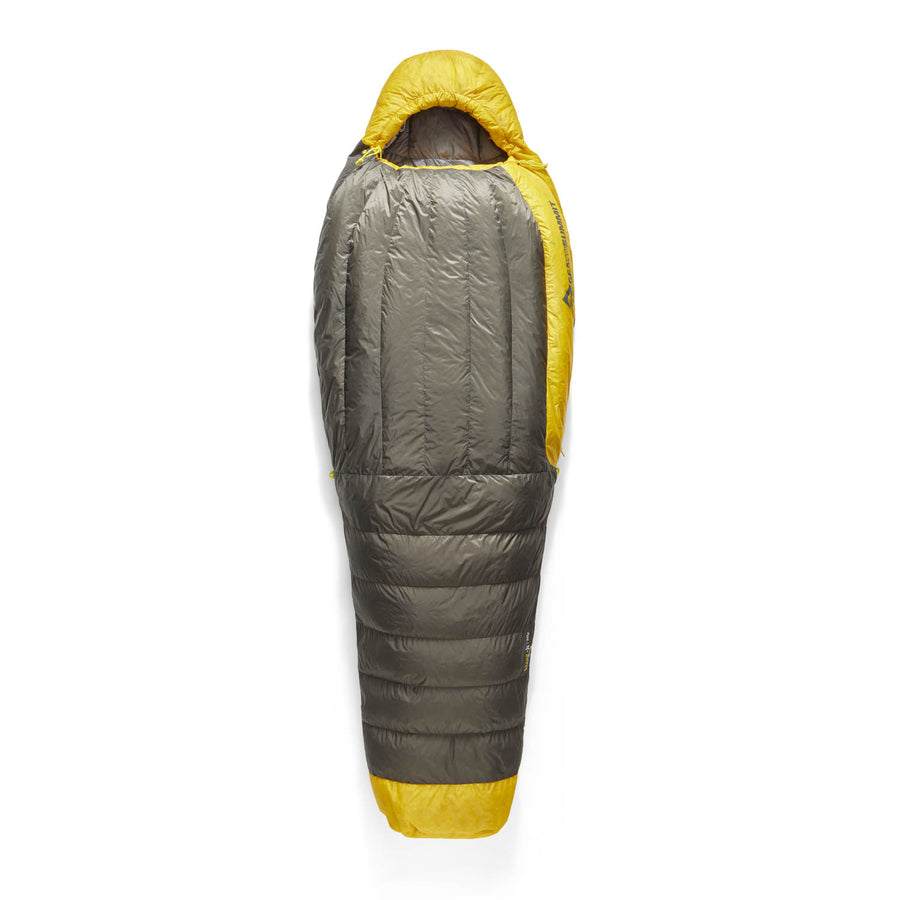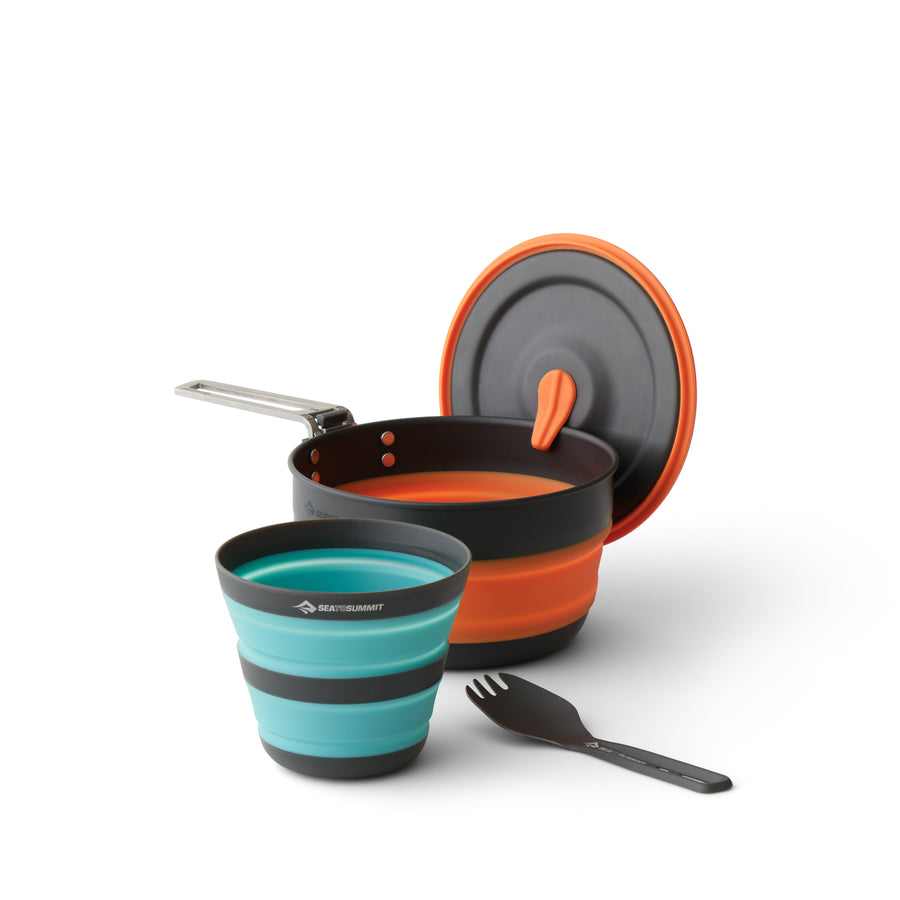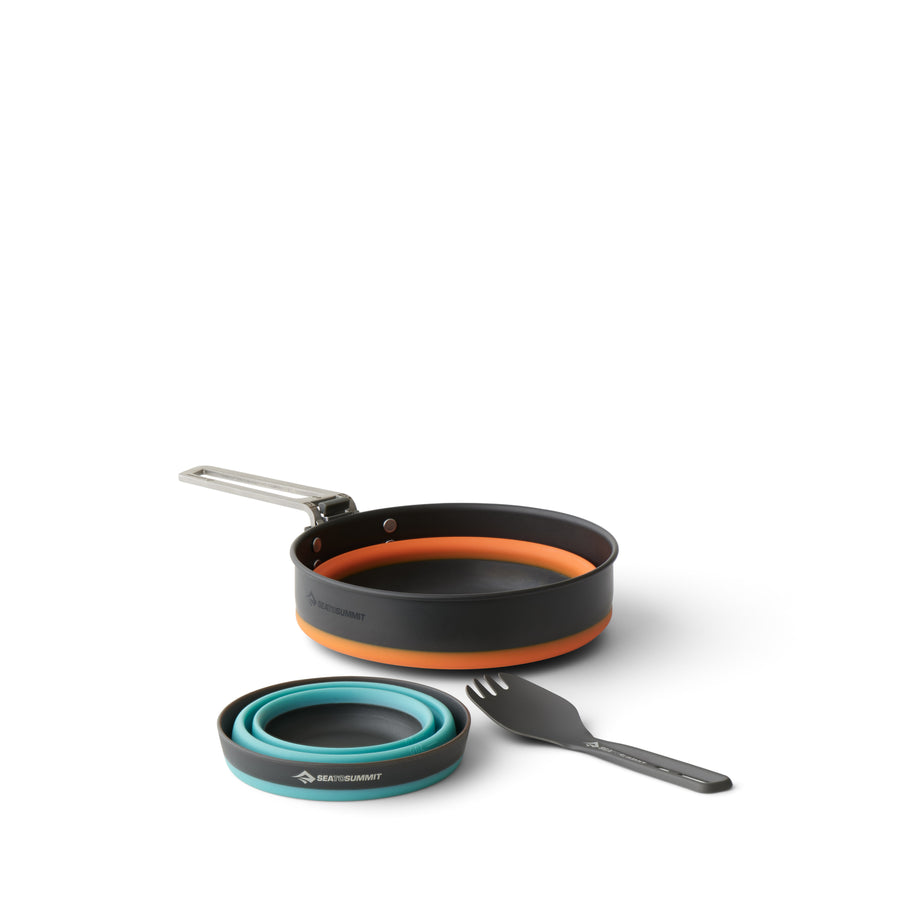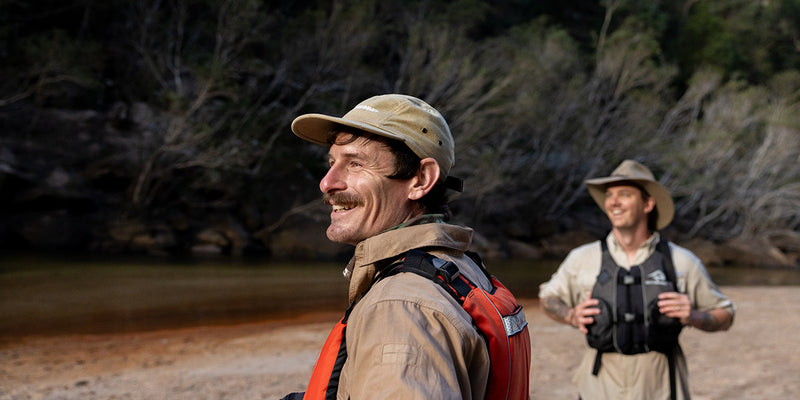How to sleep in the backcountry

We recently published a blog post with tips on how to choose and use a backcountry campsite. Once you’ve found where to camp, here’s how to get the best night’s sleep possible.
Spoiler alert – we do mention Sea to Summit sleeping bags, sleeping mats, and liners later in this post. However, important as the right sleep system may be, there are a lot of other factors involved in getting a good night’s sleep. Read on…
Staying warm means being dry
Once you have set up your tent or shelter for the night, it’s really important to change into a set of dry base-layers. The exertion of the hike will have left your daytime next-to-skin clothes damp with sweat, and this moisture will cool your core temperature no matter how many warm clothes you put on over them. The answer to “it’s too cold to change base layers!” is “It’s too cold not to!”
Changing into dry clothes will not only allow you to start warming up, it will make you feel better. And, after you get into your sleeping bag, it will help you sleep better too. A quick wipe-down with a Wilderness Wipe to remove the sweat before you slip into the dry base layers may make you feel better, still.
Well-fed before bed
We have tons of camp kitchen recipes which give some suggestions for cooking great meals in the backcountry. Trust us, making tasty, nutritious meals is a lot simpler and quicker than you may think if you know a few tips and shortcuts. Whatever you eat, there’s a reason why people say that food tastes better in the outdoors: they are usually hungrier. Carrying a pack all day possibly uphill and down dale expends energy, as does maintaining your core temperature in the chillier air after the sun sets. Eating calorie-dense foods will keep your internal furnace stoked – and this will help you sleep better.
Oh, go on, then…
An X-Mug of wine can be a pleasant addition to your dinner, and it may help you get to sleep. However, two X-Mugs of wine may dehydrate you and make it harder for you to rest. Particularly at altitude (and especially if you’re the type of person susceptible to hangovers), it’s worth keeping alcohol consumption to a minimum. Make sure you have filtered enough water to fill your drinking bottle before you head to bed.

What’s all the flap about?
Here’s a story from a friend who recently met some people at a backcountry campsite; the group members complained that flapping rainfly had kept them from sleeping the night before. “That’s because the rainfly is on backward”, my friend observed, and proceeded to rotate it 180°. Moral of the story: know how to pitch your tent before you set out on your trip (and read the tip about extra guy lines in the how to choose and use a backcountry campsite here).
The patter of tiny feet.
If you’ve pitched your shelter or tent so it doesn’t flutter in the wind, you may be amazed how quiet it is when you’re away from the urban background soundtrack. It’s quiet enough to hear every sound – including small animals scurrying through your campsite. Which is why you pack all of your ‘smellables’: food, cookware, and tableware, toiletries into a critter bag and haul it up into a tree some distance from your tent.
Pro Tip: Store your cookware and tableware so rodents in search of food residue or salt cannot get into them. They may eat holes in your X-Pots/Bowls (and contaminate any cookware/tableware even if they don’t chew it).
Goodnight, moon.
You will probably go to bed much earlier in the backcountry than you do at home. A paperback book (which, for younger blog followers, is a kind of low-tech E-reader) can fill some of the time and set you on a trajectory for sleep. Here’s a tip for a little ‘mood lighting’ in your tent: put your headlamp in a yellow Ultra-Sil Stuff Sack for a mellow, warm glow.
When you have to go…
If you, or someone who will share your tent, have the feeling that they will need to get up in the night for a ‘bathroom break’, it’s really helpful to have a small Ultra-Sil Stuff Sack (maybe the yellow one we just referenced…) ready with toiletries and essentials, and clipped in an easily accessible place using an Accessory Carabiner. Essentials include toilet paper, hand sanitizer and a headlamp. Knowing that they are close at hand means peace of mind, which means you’re more likely to sleep.

The right sleep system.
OK; we have got to the part we mentioned at the beginning of the blog. To sleep well, you need to have each of the layers of a sleep system: a liner, a sleeping bag, and a sleeping mat. Each of these needs to be appropriate for the conditions you’ll encounter. Let’s take them in order:
Liner.
A sleeping bag liner not only keeps your sleeping bag clean, it can also change your sleeping environment. If you need more warmth, use one of the Reactor series. If you are clammy in your bag on a humid night, try an Adaptor. These full-body thermal or moisture management layers are soft and stretchy, and they really will help you sleep better.
Sleeping Bag.
The most common complaint about sleeping bags is that some users feel they are not warm enough in certain conditions. Often the reason for this is that heat is disappearing into the ground, which is why you need a sleeping pad/mat which insulates you adequately (read the post on R-Values here). Another reason for a sleeping bag not offering the thermal performance you might have hoped is the confusion surrounding temperature ratings. This is true even since the European Norm became widely accepted as the rating standard. Understanding ‘EN Ratings’ is a little tricky, but you can find a good short summary of the pros and cons of the test protocol here.
Beyond ensuring that you have a sleeping pad which insulates adequately, the right liner to control your sleeping environment, and a sleeping bag with an appropriate temperature rating, make sure there’s enough room inside the sleeping bag so you don’t compress the down with your knees, hips, and shoulders when you turn on your side.
The idea that ‘a narrow bag provides better thermal efficiency’ is true up to the point when you assume that fetal position in which most of us sleep – and flatten the insulation in the areas mentioned above. This is especially true for women – a women’s bag should have a special cut to accommodate a woman’s sleeping position.
As a recommendation, the Ascent or Altitude gives you room to move and to assume a normal sleeping position while keeping you toasty warm in colder temperatures. And – as the mercury rises, the side zipper and foot box zipper provide ventilation up to the point where the bag is opened flat as a quilt.
Sleeping Pad.
Sea to Summit actually uses the term ‘sleeping mat’ for its product range, because the comfort is close to that of a regular mattress. Along with comfort, the mats insulate you from the ground (which is almost always colder than the air). The degree to which Sea to Summit mats insulates is measured in a laboratory according to the ASTM F-3340-18 standard – an important factor for true authentication of the rating. The post on R-Values provides a good explanation of this. There are lots of articles on this blog about sleeping mats (simply because the factors which govern their performance are often misunderstood) – the post ‘Which Mat to Choose’ is a good place to start.
We’ve put a lot of thought into creating the right sleeping products – because we know that getting a good night’s sleep is key to enjoying the next day’s adventure.










![Frontier Ultralight One Pot Cook Set - [3 Piece]](http://seatosummit.com.au/cdn/shop/files/FrontierULOnePotCookSet1P3Piece1.3LPotWithS-BowlandCup_ACK027031-122114_PRIMARY-1200x1200-9c6bd91.jpg?v=1749433473&width=900)
![Frontier Ultralight One Pot Cook Set - [3 Piece]](http://seatosummit.com.au/cdn/shop/files/FrontierULOnePotCookSet1P3Piece1.3LPotWithS-BowlandCup_ACK027031-122114_ADDITIONAL_1-1200x1200-9c6bd91.jpg?v=1749433473&width=900)
















